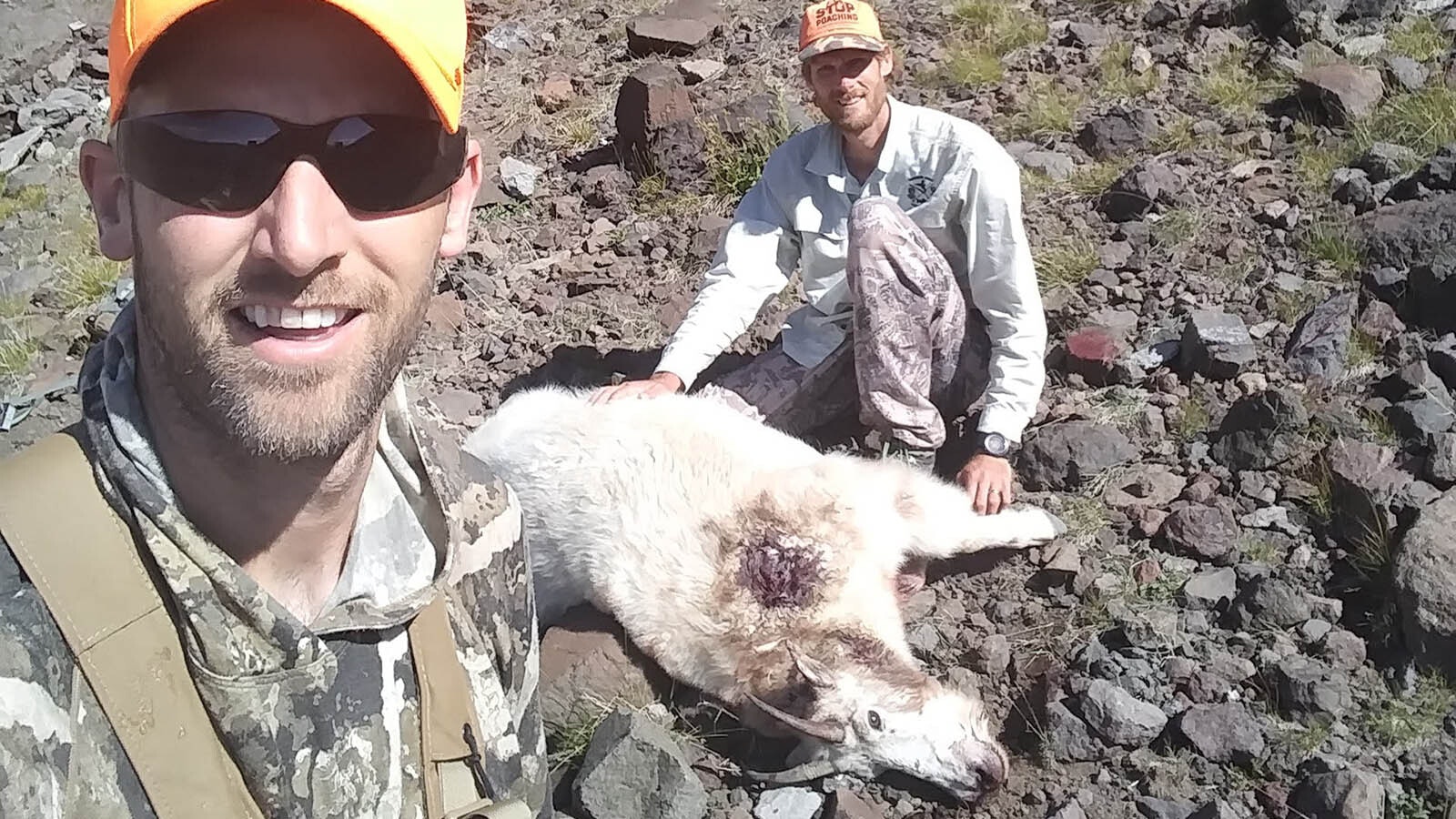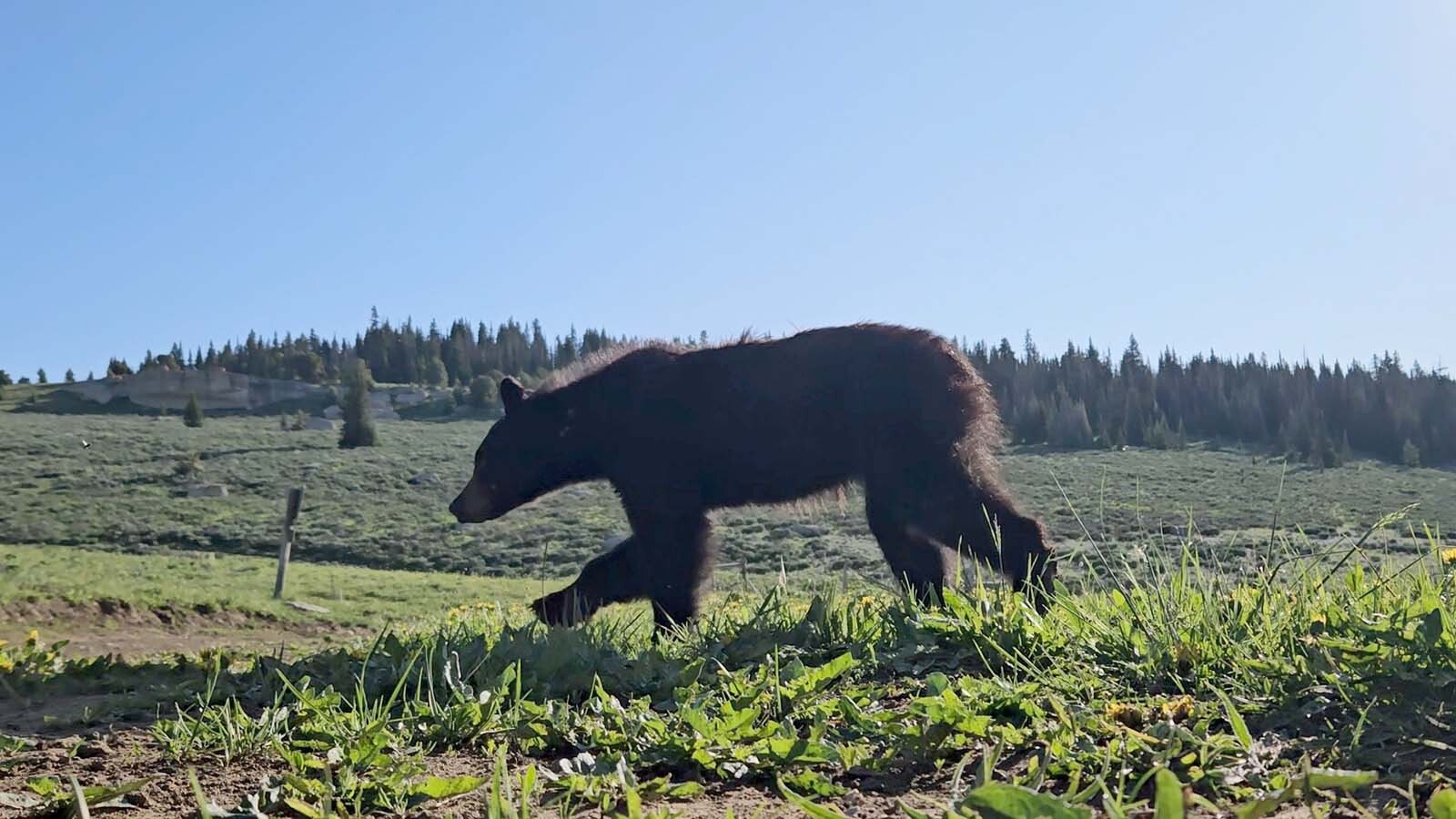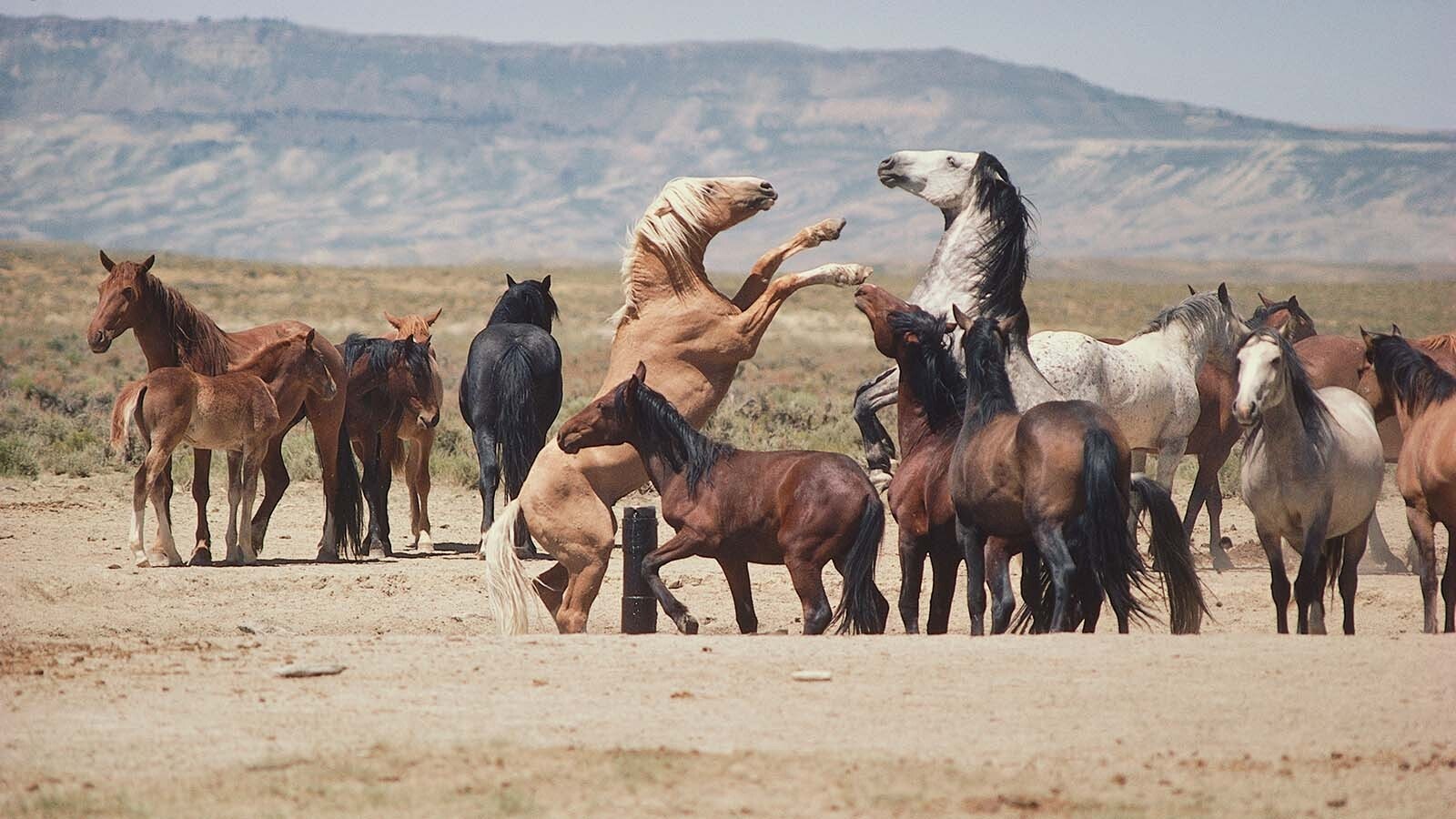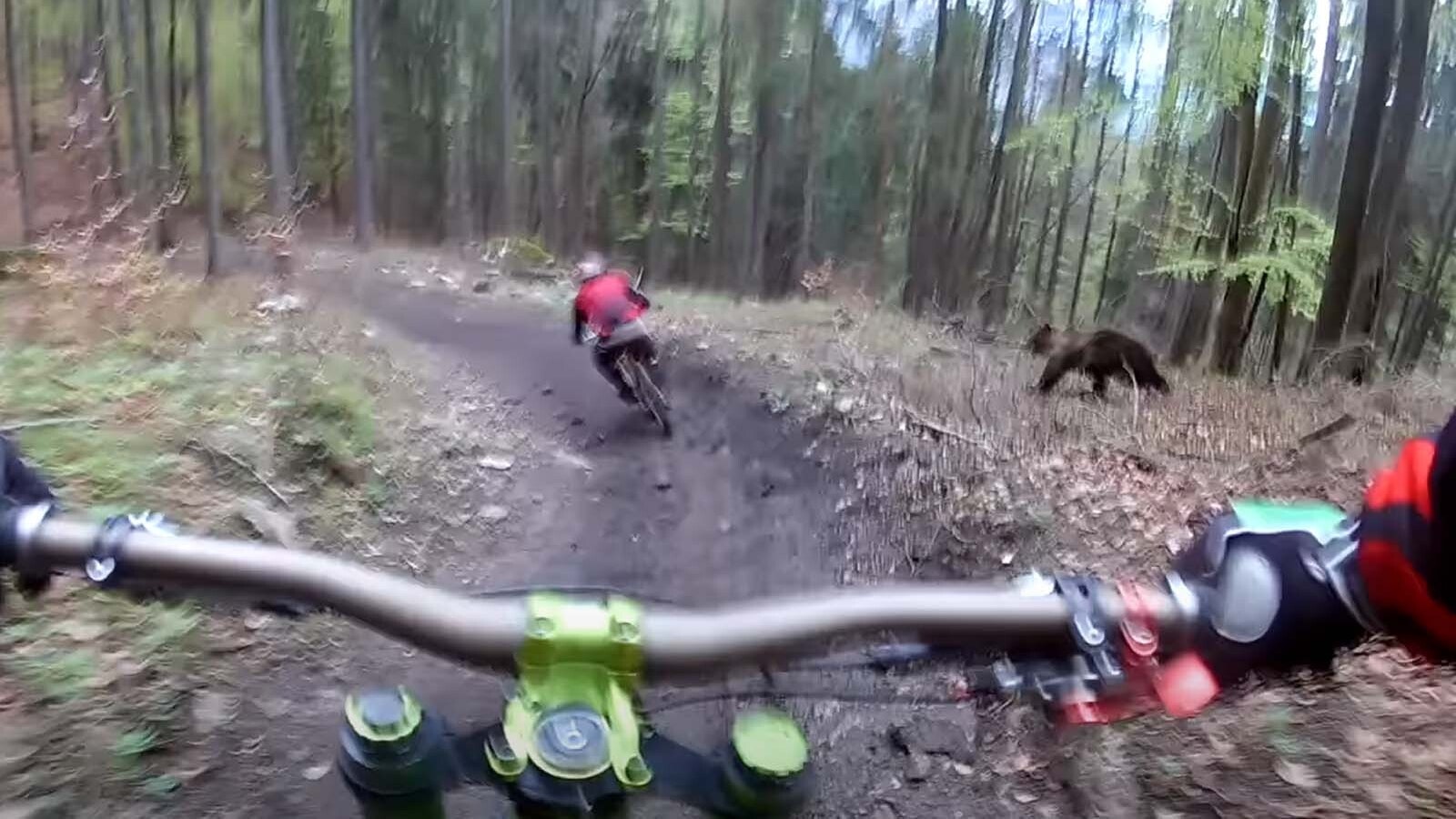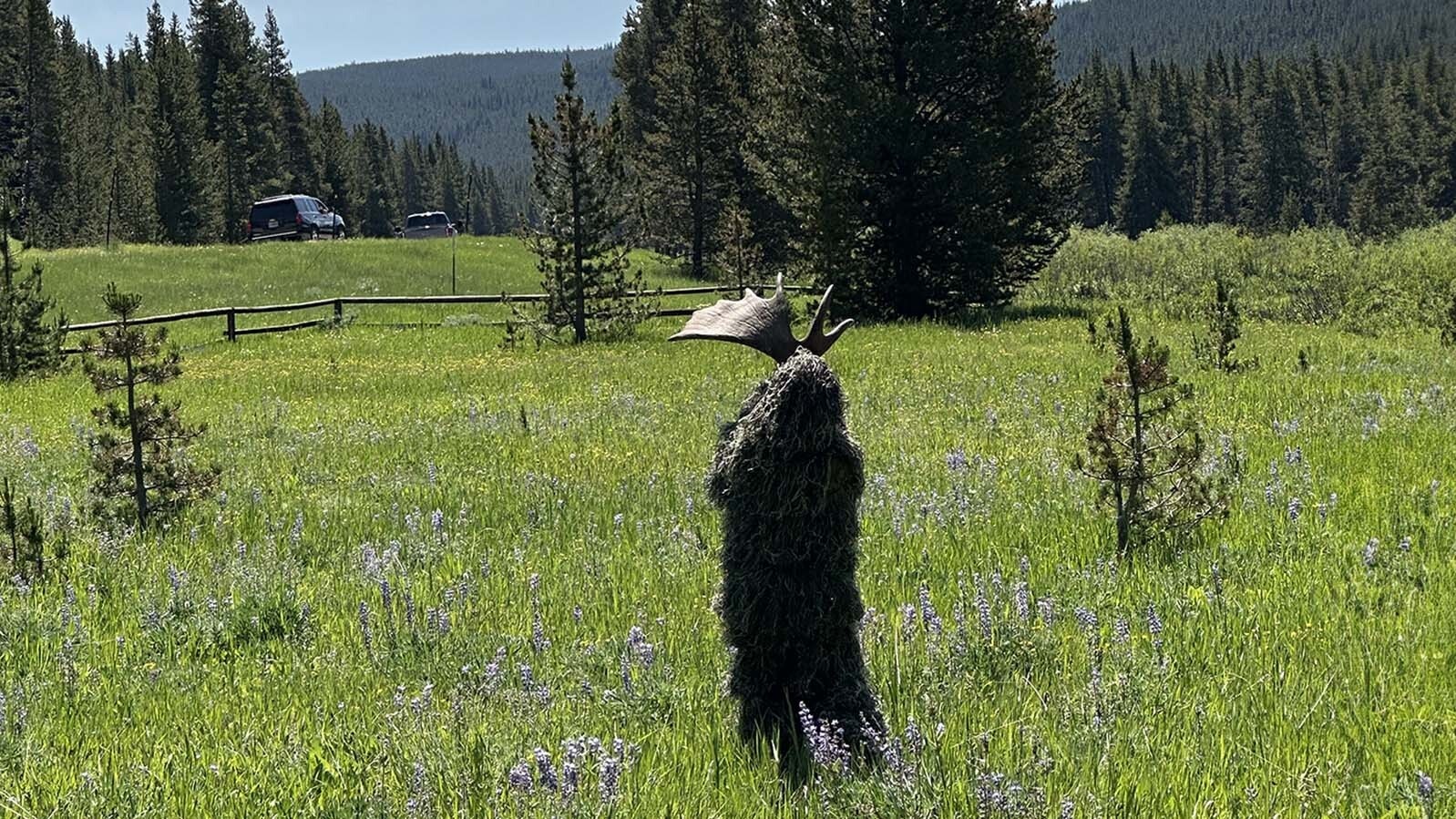Physical fitness, good marksmanship and grizzly country savvy are all important on a hunt for Rocky Mountain goats, Guy Litt of Laramie said.
But patience is probably the most important element of all – if you’re lucky enough to get a rare tag to hunt them in Wyoming.
“My hunt was an exercise in patience,” he told Cowboy State Daily. “I had to have patience to wait for when the goats would move out of dangerous places and into areas where I could stalk them.”
After hunting for several days during an August archery season, Litt’s efforts paid off on Sept. 1, the opening day of mountain goat rifle season.
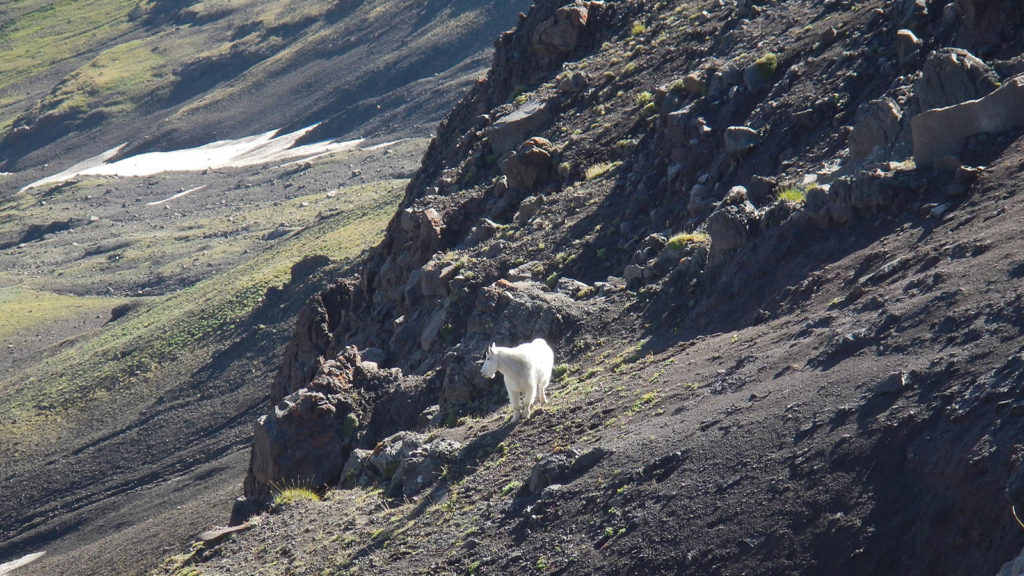
A Relatively Young Age
Even drawing a mountain goat tag was feat of luck.
“I feel so fortunate, looking at the odds this past year,” he said. “There were 48 mountain goat tags available in Wyoming and 3,980 applicants.”
Mountain goats are among Wyoming’s “Big 5” game species, for which tags are especially scant and usually once-in-a-lifetime scores for hunters. The others include bighorn sheep, bison, moose and – if and when they’re delisted and legal to hunt – grizzly bears.
Hunters will often spend many years compiling “preference points” to better their odds for drawing tags for moose and bighorn sheep. But the drawings for mountain goats are random selection, Litt said.
“I feel super fortunate to have drawn a goat tag at my fairly young age,” said Litt, 35. “I’m working on building up preference points for my bighorn sheep tag, which I figure may take another 15 years.”
Mountain Goat 101
Once Litt drew the tag, he started learning as much as he could about mountain goats, their habitat and hunting tactics.
That included reading books by wildlife biologists and visiting online forums where hunters swap stories and share advice.
“The interesting thing is, there’s never been an introduction of mountain goats to Wyoming,” he said. “Their native range is west of the Continental Divide. The goats in Wyoming have all come through populations that were introduced in Idaho and Montana.”
He also learned about the origins of the animals.
“I believe their closest relative in North America is the musk ox,” Litt said. “They are also related to goral in Asia, which are smaller than mountain goats and live in forested zones.”
It’s also challenging distinguishing between billies (males) and nannies (females).
“One way to tell is that the billies’ horns are wider than their eyeballs at the base, while nannies’ horns are narrower than their eyeballs at the base,” he said, adding that “urination stance is probably the best way to tell.
“Nannies squat, while the billies stretch out to urinate.”
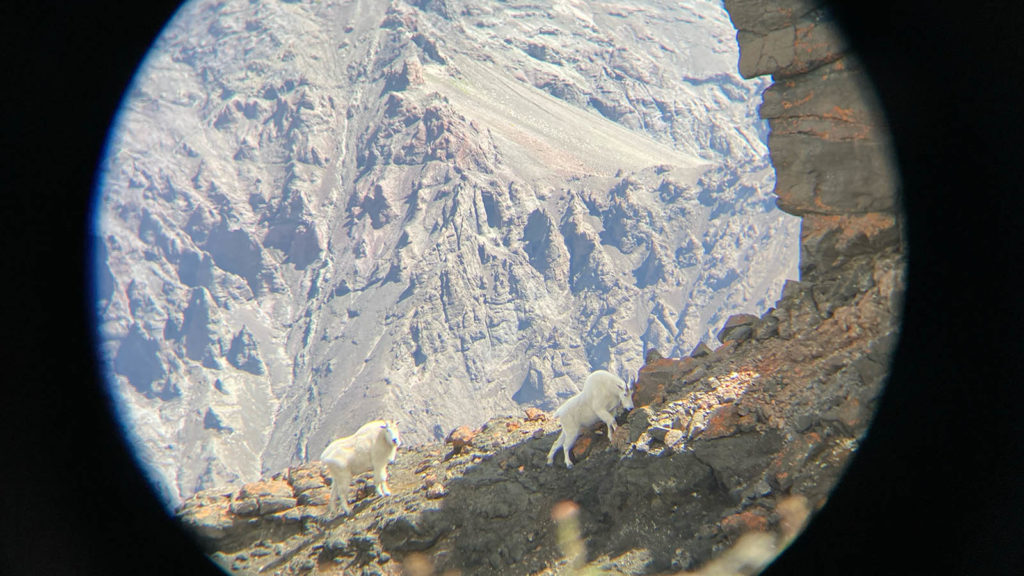
Cliffs And Grizzlies Galore
Litt’s chosen area was near Sunlight Peak in the North Absaroka mountain range. It was a 12-mile hike into base camp.
For his archery venture, he was accompanied by his wife, Lea Ritz.
“We camped in the last bunch of trees at 10,200 feet in altitude,” he said. “Most of the time I climbed up to about 11,200 to glass and observe mountain goats. And I’d drop down to around 10,000 feet, to then climb up farther from my stalking approaches.”
During the archery hunt, he saw 16 grizzly bears. They had gathered on the alpine slopes to feast upon moths, which take breaks from migration to rest among rocks and boulders there.
“The archery hunt was a lot of fun,” Litt said. “I had many great stalks. There were some stalks that I’m glad didn’t work out, because there were so many grizzly bears around and I didn’t want to have a fresh carcass there.”
He also regretted not having more mountaineering practice.
“I already had the baseline physical abilities. What I didn’t have was the mountaineering knowledge. It was intimidating being around so many cliffs,” he said.
Mountaineering skills aren’t a problem for the goats, which have almost unbelievable climbing skills, Litt said.
“Unlike most other big game animals, their front quarters are the same size as their hindquarters,” he said. “They can put their front hooves on a ledge and just pull themselves right up.”
Not Alone After All
After the archery hunt ended with no goat, Litt decided to go back in for the rifle season, trekking in alone this time.
“I had some misgivings about going back in there alone because of the grizzles,” he said.
However, when he got to the base camp site, he found his friend and fellow Laramie resident Luke Weddell was already there waiting for him.
“I wasn’t expecting him to be there,” Litt said. “My wife had told his wife to convince him to go up there so I wouldn’t be alone.”
‘Dork Stamp’ The Mark Of A Goat Hunter
When the moment came, it arrived quickly.
They returned to roughly the same place where Litt had archery hunted – and found mountain goats.
They had been watching and stalking a particular goat, which they swore was a billy. When a shot opportunity presented itself, Litt fired a 130-grain all-copper bullet from his .270 rifle.
“There was just this brief moment when the goat popped into view, and I was able to make a 190-yard shot with Luke holding his trekking poles as a rest,” Litt said. “And I managed to scope myself.”
“Scoping,” or what in shooting jargon is called a “dork stamp,” means the rifle’s recoil drove the edge of the scope back into the shooter’s face, usually making a cut along the eyebrow.
“One of the veterans on the goat hunters’ forum said a dork stamp is the mark of a true mountain goat hunter, because you have to take shots from such awkward positions,” Litt said.
The goat dropped instantly.
“Luckily, it didn’t fall off a cliff,” Litt said.
‘The Hero Of My Hunt’
When he and Weddell got to the goat, they discovered it was a nanny.
Although his hunting tag was for either sex, “I felt terrible about that the whole way out. I felt that I had taken future hunting opportunities away from somebody else.”
A game warden later reassured him that mistaking a nanny for a billy is an easy mistake, and shooting a nanny wouldn’t hurt others’ drawing odds or future hunting opportunities.
Litt described his goat as being just a little larger than a typical antelope. He and Weddell packed out 43 pounds of meat, plus the goat’s hide and head.
It was a 3-mile pack back to base camp, where they rested for the night before hiking the 12 miles out to the truck.
“Luckily, since I had Luke with me, we were able to pack everything out in one trip,” Litt said. “That makes him the hero of my hunt, because without him I would have had to make two full trips.”
Best Slow-Cooked
Litt skinned the mountain goat’s head and boiled off the remaining tissue to make a European mount of the skull.
A taxidermist tanned the hide for him, making a throw-blanket out of it.
As for the meat, Litt discovered the best way to prepare mountain goat is in a slow cooker.
“Mountain goat meat is delicious, but it’s very tough. I’ve heard that it has to do with their muscle fibers running in both directions, giving them the strength to climb. So, you have to slow-cook it,” he said.
Along with his trophy, a warm blanket and many good meals, Litt has photos and videos from his hunt, as well as lasting memories.
“This was a once-in-a-lifetime tag,” he said. “This truly was a once-in-a lifetime experience.”

